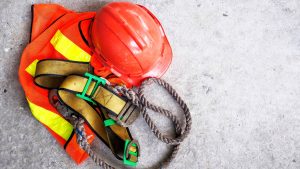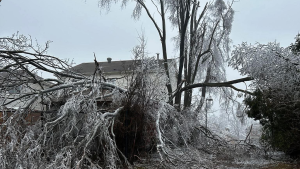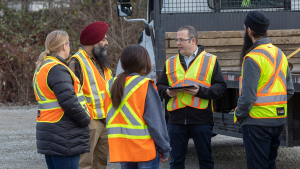Sixty contractors in Ontario are taking part in a 12-month pilot testing the merits of a digital tool developed to quickly prepare control plans to mitigate the potential health risks of overexposure to crystalline silica.
The proprietary software tool evaluates the conditions of a construction site and provides a contractor with an exposure control plan based on an algorithm of stored data from thousands of different construction projects in B.C. where silica has been an issue.
“It gives them an estimate on how exposed they are…and how to complete the task safely,” says Ammar Kavazovic, director of programs and initiatives at the BC Construction Safety Alliance (BCCSA).
“Anyone who has tried it is aware of how powerful it is.”
Over the past few years the alliance developed the tool through a partnership with WorkSafeBC and research input from the University of B.C.
The Occupational Health Clinics for Ontario Workers Inc. (OHCOW) has since partnered with the BCCSA on the silica tool’s development and is funding the year-long Ontario pilot.
The objective is to evaluate the tool’s effectiveness on jobs done by small, medium and large Ontario contractors in such sectors as demolition, renovation and wall and ceiling industries, says Kimberly O’Connell, executive director of the northern and eastern clinics of OHCOW.
Contractors have typically required specialists to test the conditions of a project to determine remediation measures but that can be costly and take away valuable time on a job.
It can be “fairly onerous, especially if you are a small or medium-sized employer,” says Kavazovic, adding the BCCSA is confident the exposure estimate taken from the Silica Tool is “what it would be” if the contractor retained a consultant to do the test.
Examples of hazardous site conditions include where rock or concrete cutting, grinding or drilling occur or where interior demolition of walls and ceilings is required.
The idea for the tool came about in 2014 as an inexpensive and expeditious alternative to developing exposure control plans through field samplings and lab testing, he says.
O’Connell points out not all contractors have quick access to an occupational hygienist to conduct air sampling on their projects.
“Things are moving too quickly on a job, so why not use data from others?”
An occupational hygienist who leads the occupational disease action plan with all the OHS systems with Ontario’s health ministry, O’Connell says the Occupational Cancer Research Centre estimates roughly 200 Ontario construction workers are diagnosed with lung cancer caused by crystalline silica exposures every year.
Overexposure also leads to diseases such as silicosis and COPD.
“It’s a huge problem.”
O’Connell says rather than just show statistics to contractors on the impact of increased exposures, the silica tool explains ways of controlling the problem through a written control plan which meets provincial regulations.
It helps educate workers about health and safety conditions of concern, she adds, noting the pilot will wrap up next November.
“We want to give them a full year of using it and then get their feedback.”
Kavazovic says while the tool is the first of its kind in the world to the best of the BCCSA’s knowledge, it has gained a lot of interest overseas.
In the U.S. there is “a static version” of the tool without a database that doesn’t offer users nearly as much control over their environment.
There is no cost to contractors in the pilot and O’Connell hopes agencies such as the Workplace Safety Insurance Board and the Ministry of Health might consider funding the tool once the pilot has concluded.
“We think the most value is if employers have access to it and don’t have to pay for it,” adds Kavazovic.
O’Connell says she sees a future where the tool is used not only in construction but in industries such as mining and welding.
“If we can take the methodology and algorithms and start expanding it…It is pretty unique.”











Recent Comments
comments for this post are closed